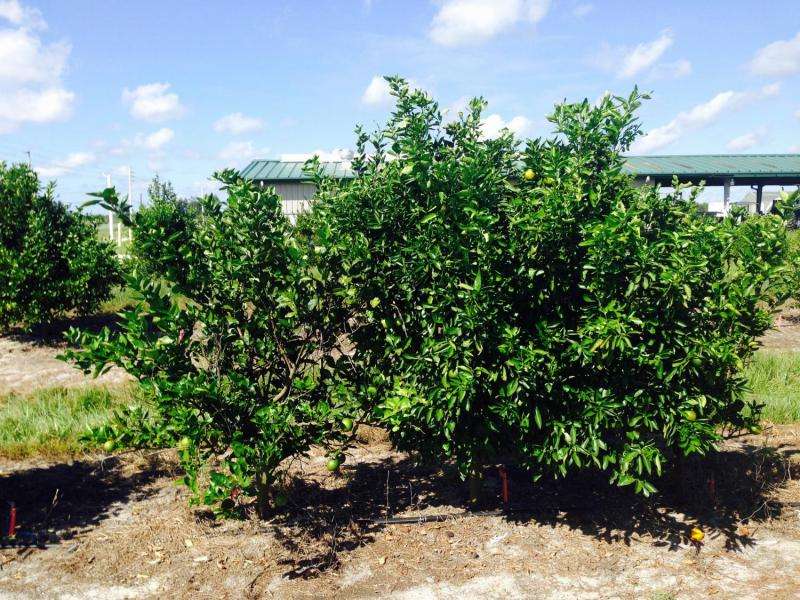Citrus scion/rootstock combinations show tolerance to huanglongbing

The citrus disease huanglongbing (HLB) is endemic in Florida, where it is estimated that more than 80% of citrus trees are currently infected. Largely as a result of this devastating disease, Florida citrus production in 2014-15 was the lowest recorded in the past 50 years. Sweet orange and grapefruit, which account for more than 95% of Florida citrus production, appear to be especially compromised by HLB. Understandably, there is an urgent need to identify citrus varieties that can resist the widespread disease. A new study in HortScience identified some scion/rootstock combinations that show potentially valuable tolerance to huanglongbing.
Ed Stover, Sharon Inch, Matthew Richardson and David Hall from the USDA Agricultural Research Service said that, although there are no commercial citrus varieties with strong HLB resistance, some field tolerance has been seen in trees that were exposed to the disease after they reached maturity. To learn more, the researchers studied tolerance to HLB under field conditions for newly planted trees of scion/rootstock combinations. The trial included 20 trees each of 'Hamlin/Kinkoji', 'Hamlin/Cleopatra', 'Temple/Cleopatra', 'Fallglo/Kinkoji' and 'RubyRed/Kinkoji' with 10 imidacloprid-treated and 10 nontreated trees of each scion/rootstock. An additional 10 trees each of 'Sugar Belle/Sour Orange' and 'Tango/Kuharske' were included, all receiving imidacloprid. Trees were planted at the U.S. Department of Agriculture research farm in Fort Pierce, Florida, and were analyzed over 5 years.
All of the trees had symptoms of HLB and tested positive for the Candidatus Liberibacter asiaticus (CLas) bacterium by 20 months after planting. Despite becoming infected by CLas, the trees continued to grow and all scion/rootstocks displayed increasing fruit production (although production was "very low" in 'Hamlin/Kinkoji', 'Hamlin/Cleopatra' and 'Ruby Red/Kinkoji'). "It is noteworthy that the most pronounced HLB symptoms and higher early pathogen titer, which are the two criteria most widely used in assessing HLB resistance, were not associated with the greatest suppression of growth and cropping, and focus on early symptomatic traits may obscure important disease tolerance," the authors said.
'Sugar Belle/Sour Orange', 'Tango/Kuharske' and 'Temple/Cleopatra' exhibited the greatest growth rates and canopy volumes, while the slowest growth rates and canopy volumes were seen in 'Ruby Red/Kinkoji'. Although it had the greatest rate of growth, 'Sugar Belle/Sour Orange' had the highest percentage of leaves showing mottle.
"It remains to be seen whether the HLB tolerance in some scion/rootstock combinations permit reasonable production of fruit of commercial quality," the authors said, "but it is promising that several mandarin hybrid/rootstock combinations displayed markedly greater growth and cropping compared with sweet orange/rootstock and grapefruit/rootstock combinations under very high HLB pressure."
More information: HortScience, hortsci.ashspublications.org/c … nt/51/2/127.abstract
Journal information: HortScience
Provided by American Society for Horticultural Science

















